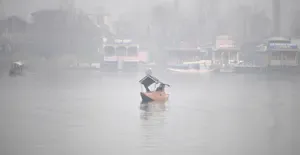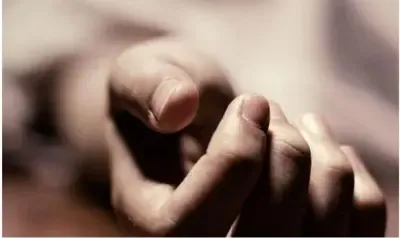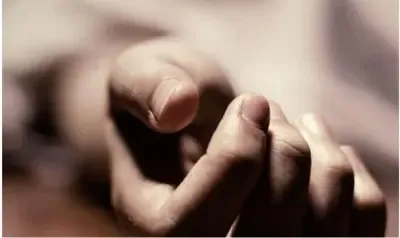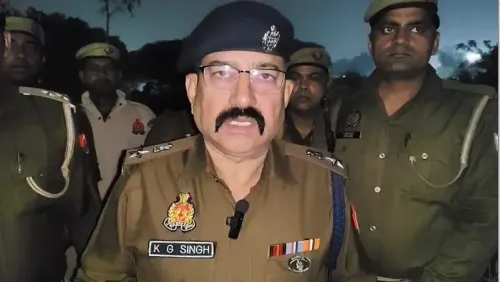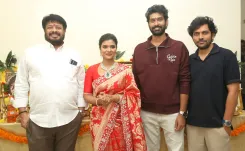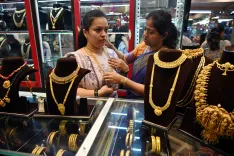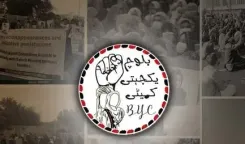Reflecting on the Tragic Exodus of Kashmiri Hindus
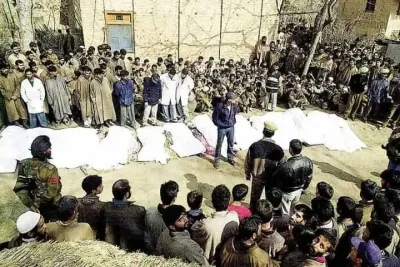
Synopsis
Key Takeaways
- The exodus of Kashmiri Hindus was not an instantaneous event but a gradual unfolding of terror.
- January 19, 1990, marks a dark chapter in Kashmiri Pandit history.
- Numerous testimonies highlight the atrocities faced by the community.
- Terrorist threats prompted many families to abandon their homes.
- The impact of these events continues to resonate among survivors.
New Delhi, Jan 18 (NationPress) As the Kashmiri Pandits commemorate January 19 as the exodus day, their narrative is one that requires retelling to understand how the alleged movement for “Azadi (freedom)” became a guise for religious persecution.
The mass departure of Hindus from the valley did not occur suddenly. It was not merely a single night in January but was a result of a prolonged period during which terrorism and separatist sentiments infiltrated the political and administrative framework of the valley. Leaders from both the Centre and the erstwhile Jammu and Kashmir state failed in their responsibilities.
January 19 symbolizes the anguish of a community that lost its homeland and continues to seek justice.
Here are some genuine accounts of those who endured targeted violence in Kashmir.
On the night of January 19 (into January 20), 1990, chaos erupted in the streets of the valley as loudspeakers atop mosques began broadcasting incendiary messages against minorities, particularly the Hindus. The events of that night initiated a wave of exodus.
Recounting the terrifying night, 80-year-old Rajni Dhar, who resided in a three-storey house in Chota Bazar, Srinagar, shared, “It was around 10 p.m. on that cold, dark night of January 19, 1990. There was no electricity. Darkness prevailed outside. Inside, the solitary flickering kerosene lamp had three pairs of eyes fixated on it as the glowing coals in the ‘Kangri’ (firepot) kept us warm. The silence was shattered by a stone that broke the window pane, bringing an eerie sense of dread.”
“Voices from nowhere grew louder with each passing second. Suddenly, loudspeakers blared as if part of a coordinated effort. Initially, we were bewildered, but soon the reality became evident. Slogans against India and Kashmiri Pandits were being chanted. Loudspeakers from mosques urged the majority Muslim community to take to the streets. We three—my husband, my mother-in-law, and I—were terrified. There was nothing we could do,” said Dhar.
“‘We want Kashmir without Hindu males but with Hindu females’, ‘Indian dogs go back’, ‘Infidels and kafirs go back or face death’, ‘we want Nizam-e-Mustafa here,’ echoed the men as the sounds reverberated throughout the valley. Thousands of protesters flooded the streets. Suddenly, tin roofs were being pounded, as if a death dance was underway,” she recalled.
“There was no police presence, and the state administration had abandoned us. I was terrified at the thought of an impending attack. This continued well past midnight. We had resigned ourselves to our fate. Around 2 a.m., sirens brought a sliver of hope. Army and BSF forces began to patrol the streets. Tears welled in our eyes as it felt like we were granted a second chance. By dawn, our lives had changed irrevocably as many began to flee…”
This is not an excerpt from a novel or screenplay; it is a true account from Rajni Dhar. Her husband, the late Maharaj Krishen Dhar, a former principal of a local school, witnessed the horrors of that fateful night.
Almost all of Dhar’s relatives evacuated the valley in the subsequent days, yet the family attempted to remain in their ancestral home.
The assassination of their neighbor, telecom engineer B.K. Ganjoo on March 22, 1990, instilled fear in the Dhar family. They were devastated as the young engineer was gentle and had harmed no one. “His brutal murder filled us with fear. He and his family were close friends. It was unbelievable that his neighbors were complicit in his death. Nevertheless, we still did not consider abandoning our home,” stated Dhar.
In April 1990, when her husband was urged to leave the valley by his Muslim neighbors, who stated they could no longer guarantee their family's safety, Dhar had no alternative but to flee. The family left all their possessions behind.
“Some of those very neighbors later looted our house and set it ablaze. We lost everything,” she recounted.
Naveen Kundu lived with his parents in the affluent area of Indira Nagar in Srinagar. Even though his father, a bank manager, received threats, he chose to stay. However, the targeted violence compelled young Naveen to escape Kashmir in April 1990.
“I can never forget those days filled with fear and despair. My immediate neighbor, D.N. Chaudhary, was abducted, murdered, and his body discarded in the yard of his home. It was traumatic,” he remarked.
Dr Sushma Shalla Kaul’s father was kidnapped, tortured, and mercilessly killed. “My father served as a CID officer. His own PSO betrayed him. On May 1, 1990, he was abducted and tortured. His nails and hair were pulled out, his body bore burn marks, and then he was shot dead. We received his body on May 3 and departed Kashmir on May 6. We have never returned,” she shared.
“My mother was a teacher, so we lived in staff quarters. My neighbors included relatives of two other victims—Girja Tickoo, who was brutally gang-raped and dismembered while alive; and Prana Chatta Ganjoo and her husband, whose body was recovered, but Prana’s body remains missing. We all shared the same sorrow and grew up together,” she added.
Bollywood actor Rahul Bhat’s family fled the valley amid rising terrorism in 1989.
An original resident of Vicharnag, a sacred site for Kashmiri Pandits, Bhat's village witnessed its first murder when an 85-year-old priest of an ancient temple was bludgeoned to death by a Muslim guard with the butt of a gun.
“We all heard wails, and everyone rushed to the scene. The assailant was arrested. The next day, a hit list was circulated with the names of all who had been present at the temple after the murder. When the fear became palpable, my family departed in September 1989, well before the rest of the Valley's exodus,” he explained.
Rakesh Bhatt, who lived in the Chanapora area of Srinagar, recalled: “I get goosebumps when I think about that night of January 19 in particular. My parents had gone to Jammu due to the Darbar move, and I was left with my elder sister. I was only 19 at that time. We were so terrified by the slogans and stone-throwing that I hid my sister in the attic. We just wanted to escape to our parents but lacked the courage to go outside, fearing for her safety. Eventually, after a few days, I managed to flee with my sister from our own house and from our Muslim neighbors,” he recounted.
Santosh Dullo remembers the day she found a ‘threat notice’ affixed to her door. Shortly thereafter, her husband’s uncle was shot dead nearby, likely mistaken for her husband, the late Dr U.K. Dullo, a professor at Srinagar Women’s College. The Dullo family had no choice but to leave.
Jawahar Lal Bhan, an engineer in the Irrigation Department of the J&K government, was busy building a new home for his family in the Baghat-Barzulla area of Srinagar when a colleague informed him that he was on the terrorists’ hit list and should vacate. The Bhan family fled the valley after entrusting the keys to his new house to his colleague. He never regained possession of the house.
(Deepika Bhan can be contacted at deepika.b@ians.in)

